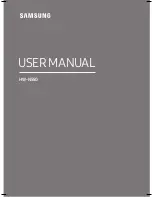
25
10: Troubleshooting
The Solar Water Heating System is designed to operate trouble-free for many years.
Use the table below to troubleshoot unexpected problems.
1) Confirm that the system is not activating:
• Place your hand on the ICM. You should feel a slight vibration and hear a slight hum.
Caution! Some surfaces may be hot!
2) If the system is not activating:
• Confirm that the power cord is plugged into a working 120 VAC outlet.
• Confirm that the power cord is firmly plugged into the controller power jack. Display
should show water temperature in water heater/water storage tank.
• Verify all sensor wires are firmly attached and functioning properly, if not the controller
display flashes SE-U, SE-L, SE-r for upper tank, lower tank or roof sensor respectively.
• Verify pumps are turning on by placing your hand on each of the pumps. You should feel
heat, feel a slight vibration and/or hear a slight hum.
• Verify heat transfer fluid is flowing. The controller continuously monitors for water tem-
perature increase in the water heater while the pumps are operating. If after 4 hours of
operation, the controller senses the water in the water heater is not heating, the controller
display flashes FLO. After system repair, system operation is restored by moving solar
switch to OFF, then back to AUTO.
• Verify that the roof temperature is at least 10 hotter than the lower tank temperature.
• Verify that the upper tank temperature is less than the selected Max Water Temp.
PROBLEM
WHAT TO DO
• If the leak is coming from a fitting, tighten the fitting or push the tube fully into the fitting.
Refer to the section in this manual on the proper procedure for installing tube fittings.
• If the leak is coming from inside the ICM, contact FAFCO for further instruction.
• If the leak is coming from the solar collector panel body, a tube repair kit may be used to
plug one or more tubes.
• If the leak is coming from the solar collector header, contact FAFCO for further instruc-
tion.
• If the leak is coming from the reservoir, other than the reservoir’s relief valve, contact
FAFCO for further instruction..
System
Doesn’t
Turn On
Leaks
If the problem persists, visit www.
FAFCO.com
for further information.
Maintenance
Ensure that the homeowner is provided with an Owner’s
Manual. Refer to the Owner’s Manual for system main-
tenance. System components are designed to be low
maintenance with estimated replacement life beyond 20
years. FAFCO HTF is designed to last for the life of the
system. However, the chemical composition of the HTF
may change over time. To check fluid, with tubing cool to
the touch, take a very small fluid sample from the fill or
drain valve. Fluid that is dark, dirty or has an acidic smell
should be replaced.
DRAIN AND REPLACE FLUID
1. Insert tubes into fill and drain ports and place free
ends into a bucket
2. Open fill and drain ports to drain glycol. The glycol
will drain freely at first and then it will start to drain more
slowly.
3. Make sure both tubes are above glycol level in bucket
and wait a few minutes.
4. If glycol does not flow freely after five minutes. Go
onto roof and remove tubing from upper header connec-
tion to break vacuum in the collector loop.
5. Refer to System Fill Procedure on page 21.
1) If the system has two tanks or an on-demand heater, refer to the water heater
manufacturer’s operation manual to troubleshoot.
2) If the system has one electric water heater tank:
• Suggest to the homeowner reducing or spacing out their hot water usage.
• Consider installing low flow shower heads and other low flow hot water fixtures.
• Consider upgrading to a larger water heater tank.
• Raise water heater thermostat setting, although this may decrease energy savings.
Low on
Hot Water
Содержание 500 Series
Страница 28: ...27 Required Labels...















































